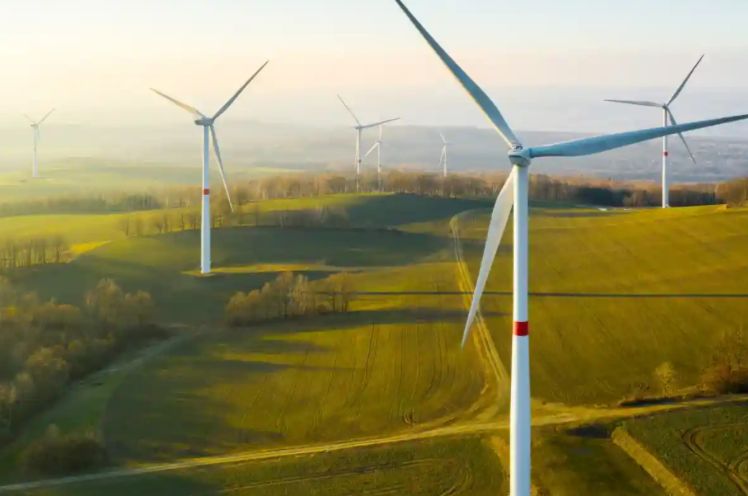
Spain is one of the world leaders in wind energy. Thanks to its vast coastal areas and favorable wind conditions, the country is successfully developing this environmentally friendly source of energy. Wind energy has an important place in Spain’s energy strategy, ensuring sustainable development and helping to reduce dependence on fossil fuels. In this article, we will look at the history, current status and prospects of wind energy development in Spain.
History of wind power in Spain
The development of wind energy in Spain began in the 1980s. Первая коммерческая ветроэлектростанция была установлена в Тарифе, province of Cadiz, in 1984. Since then, the wind energy sector has grown rapidly thanks to government support and investment in research and development.
In the 1990s, the Spanish government began to actively encourage the use of renewable energy sources, including wind. An important step was the 1997 Electricity Law, which introduced a tariff system that guaranteed a fixed price for electricity generated from renewable sources. This stimulated increased investment in wind power and attracted many national and international companies.
Current state of the wind energy industry
Today Spain ranks among the world’s leading countries in terms of installed wind power capacity. As of 2023, the country’s total wind power capacity exceeds 27 GW, which represents about 20% of the total installed capacity of all energy sources in Spain.
The main regions where wind farms are concentrated are Castile and León, Galicia, Andalucía and Aragon. These regions have the most favorable wind conditions and provide significant areas for the installation of wind turbines.
Economic and environmental benefits
Spanish wind energy has many economic and environmental benefits. First is job creation. It is estimated that wind energy in Spain provides more than 30,000 jobs, including engineers, technicians, construction workers and support staff.
Second, wind power helps reduce carbon dioxide emissions. According to the Spanish Wind Energy Association (AEE), in 2022 wind farms helped avoid more than 25 million tons of CO2 emissions, equivalent to the annual emissions of more than 5 million cars.
In addition, the use of wind energy reduces the country’s dependence on imports of fossil fuels such as oil and natural gas. This improves energy security and reduces environmental impact.
Technological innovation and the future
Spanish companies are actively involved in the development and implementation of new technologies in the wind energy sector. One of the leading companies is Siemens Gamesa, which manufactures wind turbines and develops innovative solutions to improve the efficiency and reliability of wind farms.
One of the promising technologies is the use of offshore wind farms (offshore wind farms). Spain has a huge potential for offshore wind power development due to its long coastline. At the moment, several pilot projects are being implemented in the country to explore the possibilities of using offshore wind power plants on a commercial scale.
In addition, Spain is actively developing energy storage technologies that will improve the stability and reliability of the energy system. Modern batteries and energy storage systems play a key role in integrating renewable energy sources, including wind power, into the country’s energy system.
Obstacles and Challenges
Despite significant successes, wind energy in Spain faces a number of challenges. One of them is the need to modernize the electricity grid to integrate the large amount of variable energy produced by wind farms. There are also environmental and social aspects associated with the installation of wind turbines, such as the impact on local ecosystems and the visual impact on the landscape.
However, the Spanish government and private companies continue to work to address these challenges. In 2021, the National Energy and Climate Plan was adopted to increase the share of renewable energy in the country’s energy mix to 74% by 2030, a significant portion of which will come from wind power.
Wind power in Spain represents an important element of the country’s energy strategy, contributing to sustainable development and reducing environmental impact. Thanks to favorable wind conditions, government support and active implementation of innovative technologies, Spain continues to strengthen its position as a world leader in wind power. In the coming years, the country will strive to further increase wind power capacity, expand the use of offshore wind farms and integrate energy storage technologies to ensure a sustainable and clean future.

